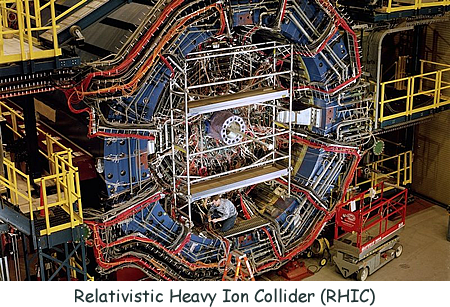Particle Physics Questions Q13. Helium is the second most abundant element in the universe. The most common isotope of helium is A nucleus of this isotope has a rest energy of 3728 MeV.
In 2011, at the Relativistic Heavy Ion Collider, anti-helium nuclei were produced. Nuclei of anti-helium are made up of antiprotons and antineutrons. It is suggested that an antineutron can decay to form an antiproton in a process similar to β– decay. In one particular collision between an anti-helium nucleus and a helium nucleus, the nuclei are annihilated and two photons are formed.
(a) State what is meant by 'isotopes'. Isotopes of an element have the same number of protons in the nucleus [2 marks] (b) Explain why two photons are formed instead of a single photon when a helium nucleus annihilates with the anti-helium nucleus. Momentum has to be conserved. Therefore two photons are formed - travelling in opposite directions. [2 marks] (c) Calculate, using data from above, the maximum frequency of the photons produced in this annihilation of a Let the rest energy of the helium nucleus plus the antimatter helium nucleus = EHE EHE = 2 × 3728 = 7456 MeV 1 eV = 1.6 x 10-19J 1 MeV = 1.6 x 10-13J ∴ EHE = 1.6 x 10-13 x 7456 J EHE = 1.193 × 10-9 J Energy is converted to two identical photons travelling in opposite directions. Let energy of each photon be E E = ½ (1.193 × 10-9) = 5.96 × 10-10J Now, E = hf So, f = (5.96 × 10-10) /(6.63 × 10-34) f = 8.997 × 1023Hz [4 marks] (d) Complete this equation for the possible decay of an antineutron.
[2 marks] (e) Name the interaction would be responsible for such a decay. Weak nuclear [1 mark] (Total 11 marks) |
Follow me...
|







